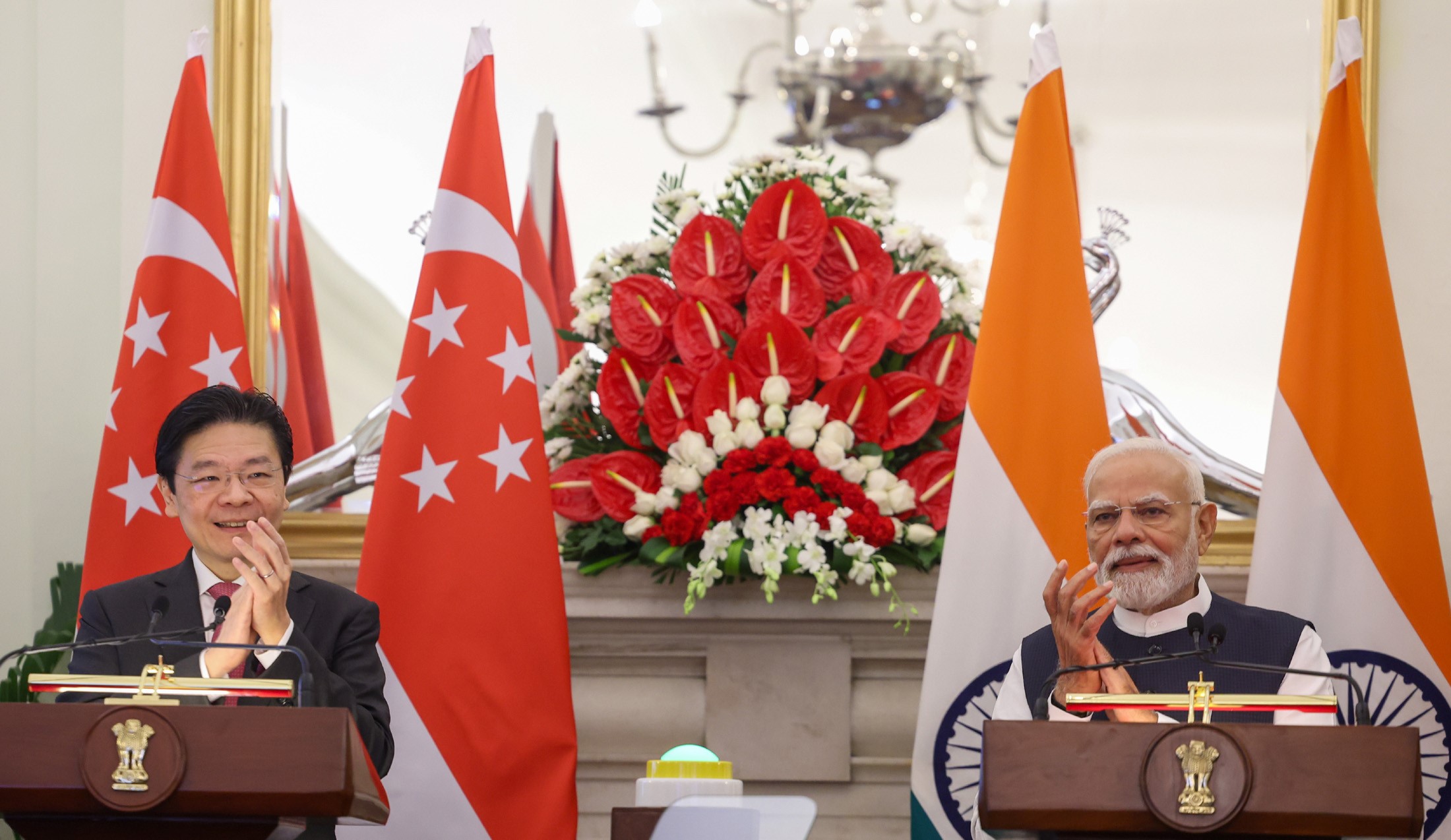India–Singapore Comprehensive Strategic Partnership (CSP): 2025 Roadmap

- 10 Sep 2025
In News:
The visit of Singapore Prime Minister Lawrence Wong to India in September 2025 marked 60 years of diplomatic relations and culminated in the adoption of a forward-looking Comprehensive Strategic Partnership (CSP) Roadmap. This elevates bilateral ties beyond trade to encompass technology, security, sustainability, and people-centric cooperation, reinforcing Singapore’s role as a vital partner in India’s Act East Policy and Indo-Pacific vision.
What is CSP?
- The Comprehensive Strategic Partnership (CSP) is the highest level of bilateral engagement between India and Singapore.
- It was elevated from a Strategic Partnership in 2015, and deepened further in 2025 through the adoption of a roadmap across eight key sectors.
Eight-Pillar Cooperation Framework
- Economic Cooperation
- Review of Comprehensive Economic Cooperation Agreement (CECA) and ASEAN-India Trade in Goods Agreement (AITIGA) in 2025.
- Partnership in semiconductors: Singapore produces 10% of global semiconductors and 20% of semiconductor equipment—key to India’s domestic chip manufacturing ambitions.
- Cooperation in industrial parks, sustainable manufacturing, capital market connectivity (NSE-IFSC-SGX GIFT Connect), and space collaboration.
- Skills Development
- Establishment of the National Centre of Excellence for Advanced Manufacturing in Chennai.
- Joint efforts in Technical and Vocational Education and Training (TVET), skill certification, train-the-trainers programmes, and nursing skill cooperation (expansion of the Singapore–Assam model).
- Digitalisation
- Expansion of UPI–PayNow linkage for seamless cross-border payments.
- Collaboration in fintech, cybersecurity, AI applications (healthcare, agriculture), start-up ecosystems, and adoption of TradeTrust for e-Bills of Lading in trade documentation.
- Sustainability & Green Growth
- Cooperation in green hydrogen, ammonia, and civil nuclear energy.
- Joint climate initiatives under Article 6.2 of the Paris Agreement.
- Collaboration in the International Solar Alliance (ISA) and Global Biofuels Alliance.
- Partnership in food security, agricultural exports, and water management.
- Connectivity
- Establishment of an India–Singapore Green and Digital Shipping Corridor linking major Indian ports with Singapore.
- Knowledge-sharing in aviation (air services agreement, sustainable aviation fuel, MRO collaboration).
- Healthcare & Medicine
- MoU on Health and Medicine: digital health, maternal and child health, disease surveillance, and medical R&D.
- Nursing cooperation and skills training to enhance employability in Singapore.
- People-to-People & Cultural Exchanges
- Student and professional exchanges, parliamentary engagement, think tank linkages, and public service training.
- Promotion of cultural heritage and maritime history collaborations.
- Defence& Security
- Enhanced military cooperation through SIMBEX 2025 and other tri-service exercises.
- Collaboration on defence technology (AI, automation, unmanned systems, quantum computing).
- Maritime security including submarine rescue cooperation and regional patrols.
- Strengthened counter-terrorism efforts via FATF and other multilateral mechanisms.
- Singapore acknowledged India’s interest in the Malacca Straits Patrol (MSP); India’s Andaman & Nicobar Command enhances regional maritime domain awareness.
Strategic Significance
- Positions Singapore as India’s gateway to Southeast Asia and the broader Indo-Pacific.
- Enhances regional security architecture aligned with ASEAN principles.
- Demonstrates how middle powers can address global uncertainties through technology partnerships, defence collaboration, and sustainable growth initiatives.
